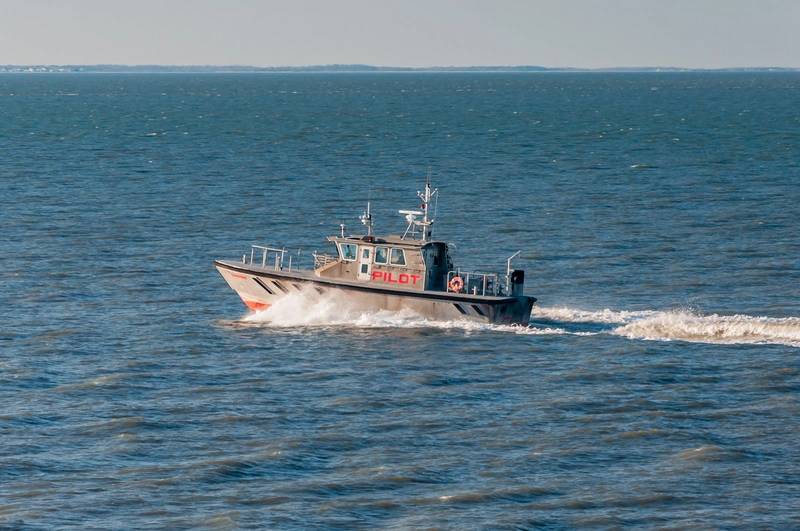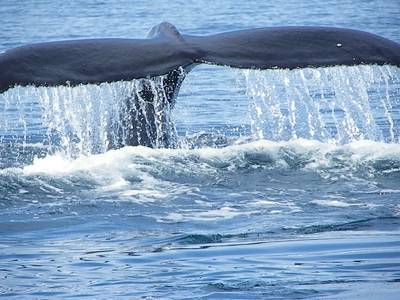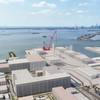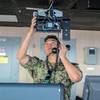Wrong Approach to Protect the Right Whale
Pilot groups and port authorities have worked together to grow East Coast ports in a safe and environmentally responsible way. This growth has happened under strict safety and environmental regulations, including seasonal vessel speed regulations imposed by the National Oceanic and Atmospheric Administration (NOAA) to protect North Atlantic right whales (NARW). Last year, however, without sufficient scientific or economic impact data, NOAA proposed radical changes to these regulations. The American Association of Port Authorities (AAPA) and the American Pilots’ Association (APA), organizations representing key parts of the maritime supply chain, have serious concerns and have urged NOAA to modify its proposal.
Current NOAA regulations, which limit vessels 65 feet and longer to 10 knots from November through May, have been in place since 2008, and ports and pilots have adapted to comply with these regulations. In August 2022 NOAA proposed additional changes to these regulations that would, among other things, apply speed restrictions to vessels 35 feet and longer, including pilot boats, and alter the existing “navigation safety deviation clause.” Applying speed restrictions to a larger class of vessels, including pilot boats, and altering the navigation safety deviation clause as proposed would be dangerous, negatively impact port efficiency, and unduly burden pilots who need to be focused on safety.
Transferring pilots between pilot boats and merchant vessels is unavoidably dangerous. Since 2008, eight U.S. pilots have died during transfers and four international pilots have been killed just this year. NOAA’s proposal would make pilot transfers more dangerous by forcing pilot boats and commercial vessels to operate outside safe parameters, including by requiring slower speeds of pilot boats which will hinder not only hinder transfer operations, but also increase pilot and pilot boat operator fatigue.
Piloting also facilitates the flow of maritime commerce. Understandably, due to the unique demands of piloting, pilot boats are multi-million dollar special-purpose craft built to operate in dangerous environments. Pilot boats, many of which on the East Coast were designed—in good faith reliance on NOAA’s existing regulations—to be less than 65 feet, must operate in swirling winds and currents to transfer pilots to and from commercial vessels that are often 10 to 20 miles offshore. It would be unsafe to venture this far offshore, especially in the winter months when the speed restrictions are in place, on vessels 35-65 feet. Additionally, pilot boats approach large moving vessels at speeds carefully calculated to bring the boat alongside at the best angle and moment to facilitate what is, even in benign conditions, a dangerous operation. These boats must be able to instantaneously respond to these demanding conditions, as well as the significant effects from large vessels’ wakes.
NOAA’s proposed application of speed restrictions to pilot boats will also delay merchant vessels waiting to get in and out of port. Frequently, a pilot boat will depart port with more than one pilot on board, transit to the pilot boarding area, deliver one pilot to an awaiting vessel, and then move to deliver pilots to other vessels. A pilot boat may also retrieve a pilot from a vessel that has finished its outbound transit and deliver that pilot to an inbound vessel awaiting a pilot. For safety, these waiting vessels are spaced miles apart. If this shuttling of pilots is restricted to 10 knots, ships will be delayed and port efficiency will suffer.
 © Walt / Adobe Stock
© Walt / Adobe Stock
Unnecessarily limiting the speed of commercial vessels entering and departing ports will also be dangerous and devastatingly impact the maritime supply chain. To mitigate these impacts, NOAA included a “navigation safety deviation clause” in the current regulations. Unfortunately, NOAA’s proposed changes to the clause will place an enormous administrative burden on masters and pilots and have the potential to negatively impact both the master-pilot relationship and port efficiency.
NOAA’s proposed speed zones include areas encompassing offshore Federal Navigation Channels (FNC), which are perpendicular to strong winds prevalent during winter months. It is in these unsheltered, restricted channels—with the challenging combination of strong currents, confused winds, heavy vessel traffic, and dangerous shoals—where pilots and masters ply their trade.
These proposed reporting requirements would be distracting just as the vessel is in the challenging FNCs. A pilot may need to increase vessel speed on a moment’s notice to combat the lateral forces of the winds and currents and keep the vessel in the channel. Limiting pilots’ and masters’ ship handling options with extra bureaucratic steps, especially when they are navigating a large vessel in difficult waterways, could lead to environmentally damaging groundings and collisions.
These proposed reporting requirements are also distracting. Based on NOAA’s overt reference to the criminal aspects of the speed regulations, the regulations could also cause masters and pilots, at a critical point when they are considering whether to increase speed for the safety of the ship, crew, and cargo, to worry if their decision could subject them to imprisonment. This understandable concern over criminalization could also result in ports being limited to one-way traffic and daylight-only vessel transits.
Pilots must be free to build cooperative relationships with masters, exercise independent judgment, apply local knowledge and have the full range of ship handling options available to maximize navigational safety and protect the environment. The proposed changes to the deviation clause threaten pilots’ ability to carry out their responsibilities.
For example, when the proposed deviation clause is invoked, the master must complete and electronically submit a lengthy report to NOAA within 48 hours. This is impractical and possibly even dangerous. The proposed report demands considerable time to gather information, complete the form, and transmit it. Further, the pilot must “attest to the accuracy of the information.” The only practical way to comply with the rule would be for the master to complete the report in near real-time and the pilot to immediately review and “attest” to the information. It is unrealistic to expect the pilot and master to correspond electronically over the next two days to complete and submit the report after they part ways for other assignments.
Shockingly, NOAA’s proposal includes virtually no analysis of the economic impacts the changes would have on East Coast ports and the billions of dollars in commerce they sustain. NOAA fails to acknowledge the enormous economic impacts its proposal will have on the supply chain.
Beyond a lack of economic analysis, NOAA’s own data does not support such a dramatic alteration of the existing speed regulations. During an August 2022 webinar, NOAA confirmed that it is unaware of a single confirmed instance of a NARW strike by a pilot boat, nor by a piloted vessel in a FNC.
Pilotage, at its core, is about safety and protecting the marine environment. Similarly, port authorities seek to ensure maritime commerce efficiently flows in an environmentally friendly way. As professionals who make their living on or near the water, pilots and ports have a deep concern for the health of the marine environment. As such, AAPA and APA support NOAA’s efforts to protect the NARW but urge the agency to take a more targeted and technology-based approach in these efforts.











